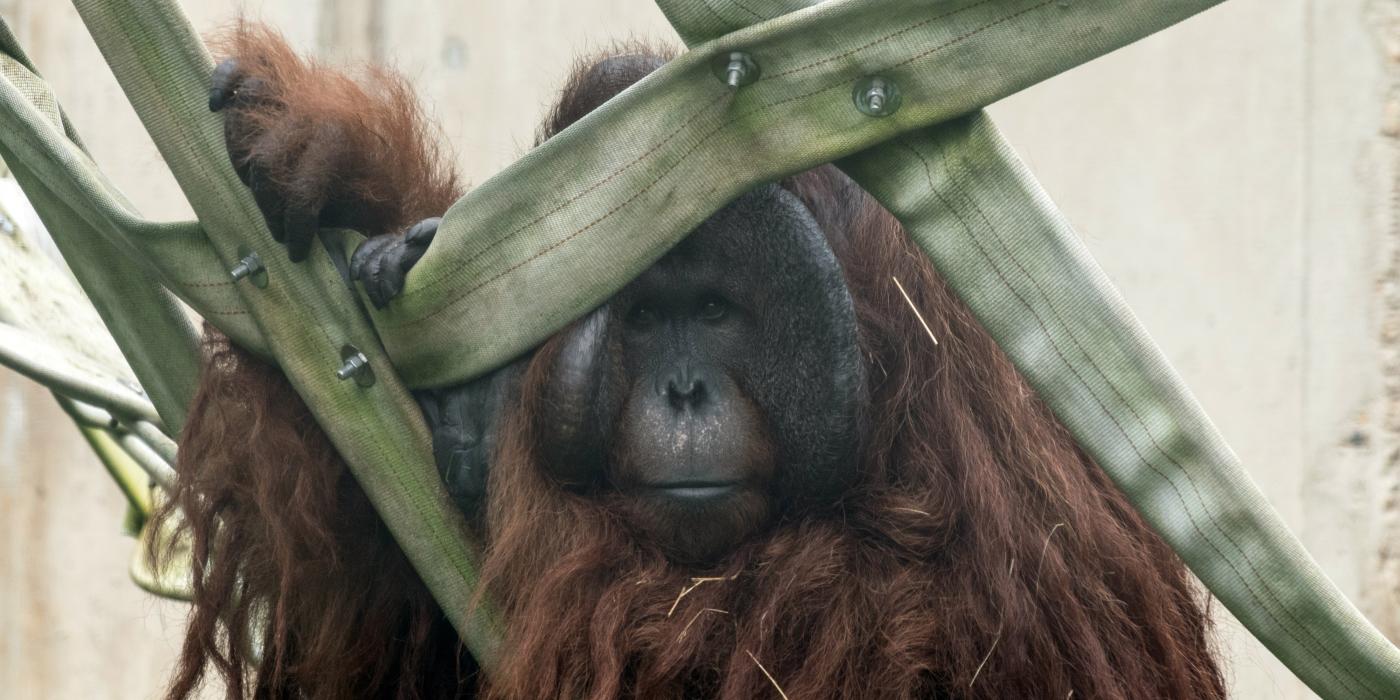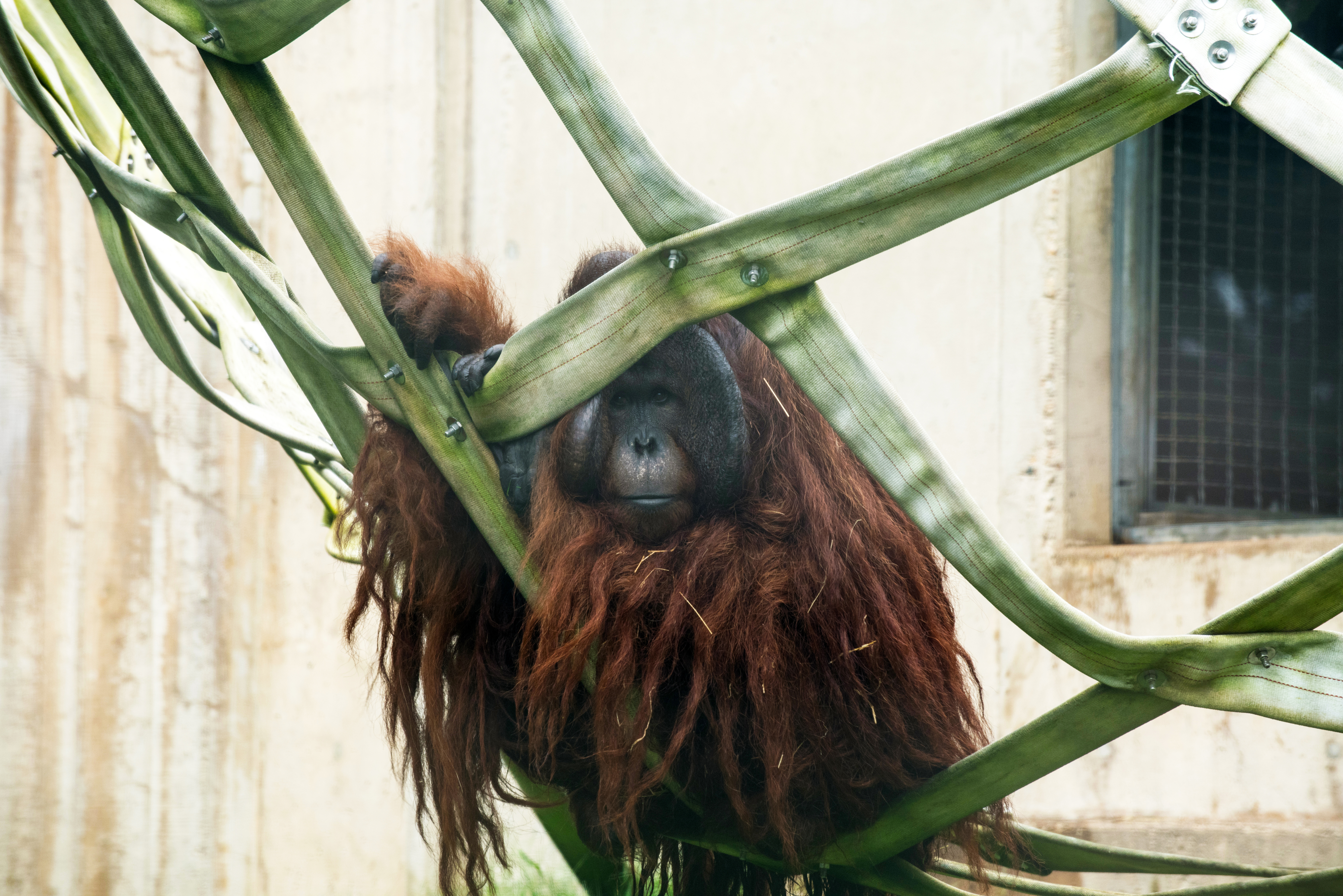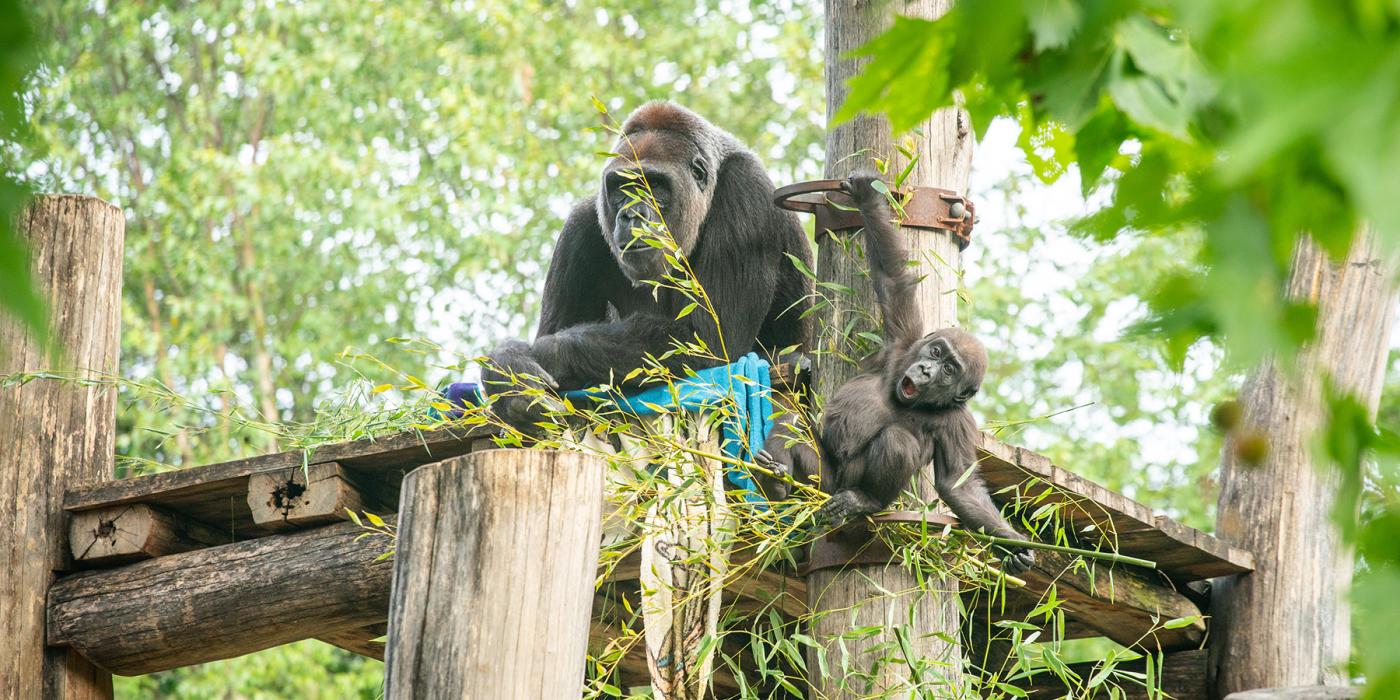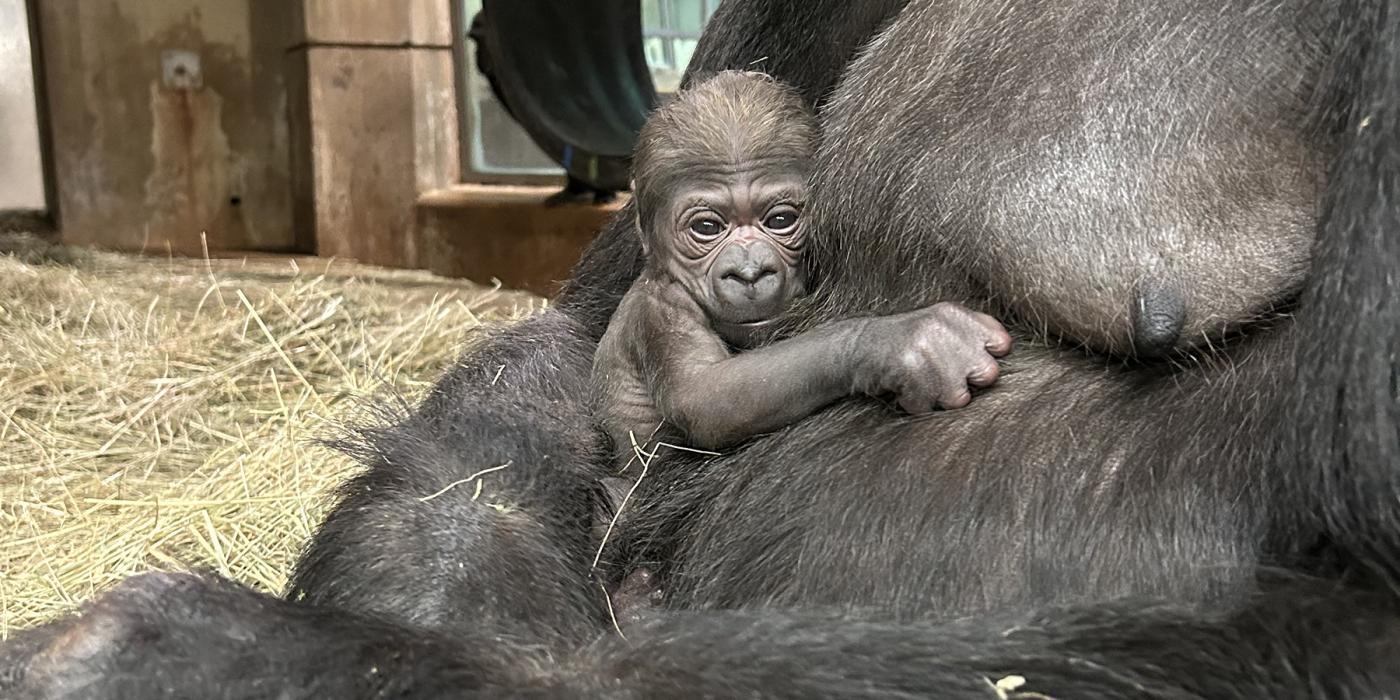Bornean Orangutan Dies at the Smithsonian’s National Zoo and Conservation Biology Institute

Primate staff at the Smithsonian’s National Zoo and Conservation Biology Institute’s (NZCBI) campus in Washington, D.C., are mourning the loss of Kyle, a 28-year-old male Bornean orangutan who died Jan. 10. The median life expectancy for male Bornean orangutans in human care is about 27 years.
When Kyle was diagnosed with chronic respiratory disease in 2010, Zoo veterinarians created a surgical stoma in his throat sac to help alleviate the severity of his symptoms. As part of his long-term therapy, the animal care team closely monitored his health and provided twice-daily nebulization treatments, which helped stabilize his symptoms for many years.
On Jan. 7, primate keepers noticed that Kyle’s breathing pattern was abnormal. Although animal care staff administered additional supportive care—including antibiotics and anti-inflammatories—Kyle’s symptoms continued to progress. Concerned that Kyle’s respiratory disease had worsened, animal care staff conducted a diagnostic exam Jan. 10. Veterinarians anesthetized Kyle to further evaluate his condition and provide more targeted care. The exam revealed Kyle’s chronic respiratory disease had progressed into bilateral bronchopneumonia. To treat Kyle, they administered intravenous fluids, antibiotics, anti-inflammatories and nebulization with a mucolytic during the exam. During Kyle’s recovery from anesthesia, he stopped breathing and went into cardiac arrest. Despite efforts to resuscitate Kyle, mucus ultimately obstructed his lower airways, and he died with the animal care team by his side. A final pathology report will provide more information in the coming weeks.
Kyle was born at the Cleveland Metroparks Zoo in Ohio in December 1996. He came to the Smithsonian’s National Zoo in 2004 per a breeding recommendation from the Association of Zoos and Aquariums’ Orangutan Species Survival Plan (SSP). The SSP scientists determine which animals to breed by considering their genetic makeup, nutritional and social needs, temperament and overall health. He bred with the Zoo’s female Bornean orangutan, Batang, who gave birth to their son, Redd, in September 2016. Zoo visitors can see Batang and Redd at the Great Ape House and Think Tank exhibits, along with four other orangutans named Lucy, Bonnie, Iris and Kiko.
To replicate the social yet semi-solitary social groupings of orangutans in the wild, the Zoo’s orangutans live in small, flexible groups. Bonnie, Batang, Redd and Lucy were given the opportunity to spend some time observing their deceased exhibit-mate from an adjacent enclosure. Although scientists do not fully understand how orangutans mourn, keepers are monitoring the orangutans closely as they adjust to the new social dynamics.
The primate team fondly remembers Kyle as a kind and gentle individual. While he has been in the Zoo’s care over the past 21 years, they watched him mature from a gangly juvenile to an adult with impressive cheek pads and boisterous displays and calls that echoed throughout the Great Ape House and Think Tank habitats. He contributed greatly to the community of orangutan caretakers’ knowledge of Bornean orangutans by voluntarily participating in the Zoo’s positive reinforcement training program. From the behaviors Kyle was trained to do, keepers were able to collect blood pressure readings, ECG readings and awake radiographs. He also took part in various cognitive research projects over the years; often, though, he would lose patience while trying to work through certain challenges. Although male orangutans do not take on parental duties, Kyle was one of Redd’s best playmates and served as a great adult male role model to his son.
Native to Indonesia and Malaysia, all three species of orangutans—Bornean, Sumatran and Tapanuli—are considered critically endangered by the International Union for Conservation of Nature due to habitat loss, fires and illegal hunting and trafficking for the pet trade. Unsustainable timber harvesting and agricultural development—particularly palm oil plantations—pose a serious threat to these arboreal apes. Those interested in helping to save orangutans in their native habitat can make orangutan-friendly shopping decisions by ensuring that the foods, cosmetics and bath and household products they purchase contain sustainably sourced palm oil.
# # #
Photo caption: Bornean orangutan Kyle climbs a web made of recycled fire hose in the Great Ape House’s outdoor habitat. Photo credit: Connor Mallon, Smithsonian’s National Zoo and Conservation Biology Institute
Related Species:



